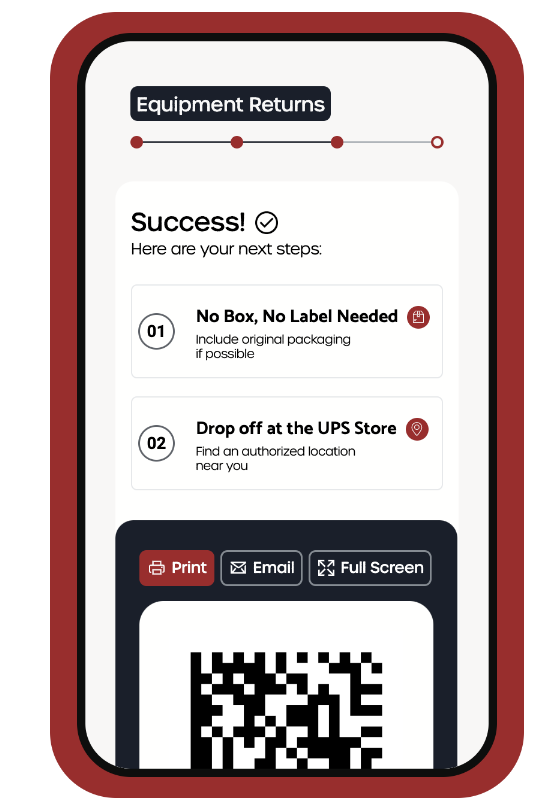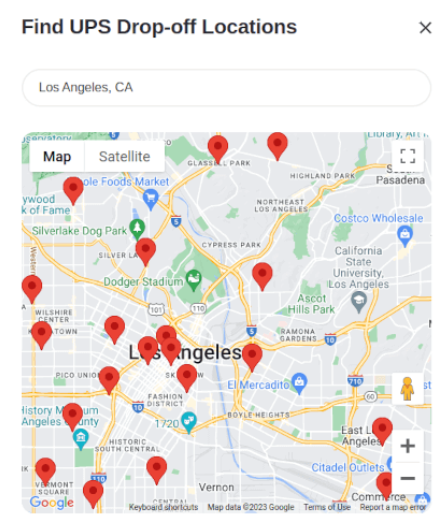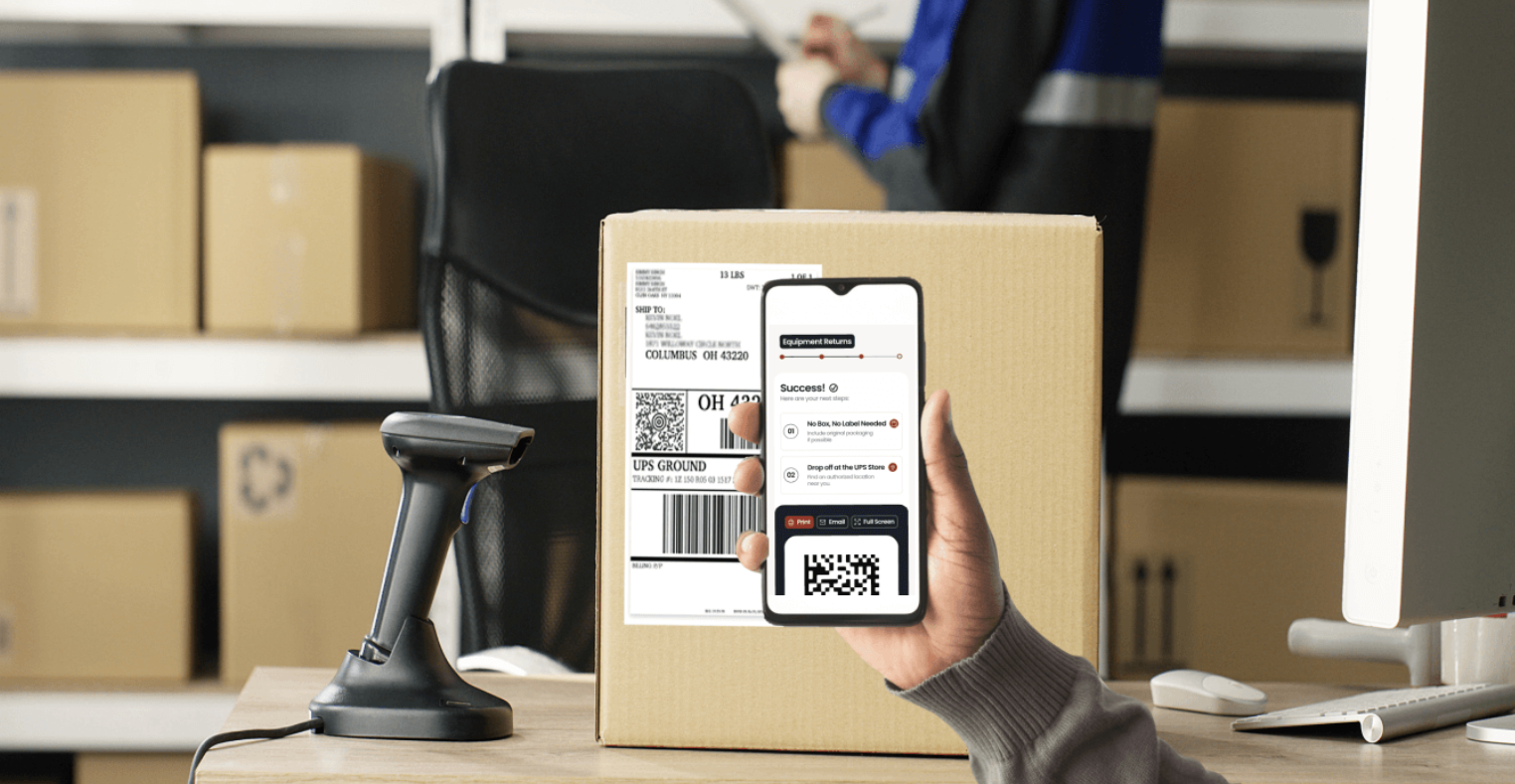How to Avoid Viral Layoff Fails and Manage Remote Employee Equipment Returns Like a Pro

Layoffs. Just uttering the word can conjure images of sad cubicle cleanouts and awkward goodbyes. Yet, in today’s fast-paced business world, layoffs have become an almost inevitable part of the corporate lifecycle. Some companies handle them with grace and empathy, while others stumble spectacularly, setting new standards for what not to do. Whether it’s a poorly timed announcement that leaves employees blindsided or an impersonal mass email that spreads like wildfire on social media, the way layoffs are managed can make or break a company’s reputation. It’s a delicate dance of timing, communication, and empathy, and when done wrong, the fallout can be as viral as a cat video.
But layoffs are just one side of the coin. The other side is the often-overlooked process of ensuring that departing employees return company equipment and proprietary information efficiently and securely. Whether employees are moving on to greener pastures or being let go, developing a robust exit process that provides simplicity, visibility, and accountability is crucial. This involves meticulous tracking of assets, ensuring that laptops, phones, tools, and sensitive IP are all accounted for and returned in a timely manner.
Enter ReadyCloud, the unsung hero that can transform these logistical nightmares into a streamlined, accountable, and transparent equipment return and IT asset recovery process. With easy-to-access labeling, visibility, and tracking, ReadyCloud ensures that nothing falls through the cracks, preserving both your assets and your peace of mind.
The Domino Effect of Bad Layoff Practices
Layoffs are never easy, but some companies manage to turn a tough situation into an outright disaster. When handled poorly, layoffs don’t just hurt those directly affected—they can have long-lasting repercussions on the company’s morale, reputation, and bottom line. Bad layoff practices can spread like wildfire, creating a domino effect that impacts everyone involved. Let’s dive into the anatomy of a terrible layoff and explore how these blunders can go viral, leaving a trail of corporate carnage in their wake.
The Anatomy of a Terrible Layoff
A layoff can go wrong in countless ways, but some blunders are particularly infamous. Here are a few glaring examples of what can turn a layoff into a complete catastrophe:
- Lack of Empathy: Delivering the news with cold, impersonal language can make a bad situation even worse. Employees need to feel valued, even in their departure.
- Poor Timing: Announcing layoffs during holidays or significant events shows a lack of consideration for employees’ personal lives and can amplify the negative impact.
- Impersonal Delivery: Firing employees en masse via email, or worse, on a video call without prior warning, strips the process of humanity and respect.
Examples of Layoff Disasters
- Zoom Catastrophes: Imagine being fired in a massive Zoom call right before Christmas. The absence of a personal touch is striking, and the news quickly spreads across social media like wildfire.
- Holiday Horrors: Announcing layoffs just before major holidays not only ruins the festive spirit but also paints the company as insensitive and poorly managed.
- AI Gone Awry: Using AI to make layoff decisions can lead to cold, algorithm-driven outcomes that disregard human emotions and individual contributions.
Layoffs Go Viral
Bad news travels fast, and layoffs are no exception. Social media platforms amplify the voices of disgruntled employees, turning isolated incidents into viral sensations. Here’s how it happens:
- Instant Sharing: As soon as the news breaks, affected employees take to social media, sharing their stories on Twitter, LinkedIn, and Facebook.
- Memes and Rants: The internet loves a good story, and layoffs are fertile ground for memes, rants, and viral videos. One simple post can quickly turn into a viral campaign with your company featured front and center.
- Lasting Impact: These viral moments live on in the digital world, tarnishing the company’s reputation long after the actual event.
The Consequences
The fallout from a poorly handled layoff can be extensive:
- Damage to Employer Brand: Prospective employees may think twice about joining a company known for its harsh layoff practices.
- Reduced Morale: Remaining employees often suffer from survivor’s guilt and reduced trust in management.
- Financial Impact: Negative publicity can result in missed business opportunities and a drop in stock value.
Transitioning to Better Layoff Practices
Avoiding these pitfalls requires a thoughtful, compassionate approach to layoffs. Companies need to develop robust processes that handle layoffs with dignity and respect. This includes clear communication, empathetic delivery, and effective management of the logistics involved. In the next section, we’ll explore how AI and automation can play a role in improving the layoff process, making it more efficient without sacrificing the human touch.
The Role of AI and Automation in Layoffs
In the pursuit of efficiency and cost reduction, companies are increasingly utilizing AI and automation to manage different facets of their operations, including layoffs. While these technologies can offer significant benefits, they also come with challenges that can exacerbate the already delicate process of workforce reductions. Let’s delve into the role of AI and automation in layoffs, exploring their potential and pitfalls.
AI and the Temptation to Lay Off Remote Workers
As remote work becomes more prevalent, companies are tempted to use AI to make decisions about who to let go. This approach can seem appealing due to its efficiency and objectivity. However, there are significant drawbacks:
- Algorithmic Coldness: AI can analyze performance data, but it lacks the ability to understand personal circumstances and individual contributions beyond the metrics.
- Bias and Fairness: AI systems can unintentionally reinforce existing biases in their training data, resulting in unfair decisions.
- Employee Perception: Employees may feel dehumanized if they believe that a machine, rather than a human, made the decision to terminate their employment.
Examples of AI Missteps
- Performance Metrics: Relying solely on quantitative performance metrics can overlook qualitative aspects like team morale, leadership skills, and individual growth potential.
- Remote Worker Vulnerability: Remote employees might be disproportionately affected if the AI values in-office presence and visibility over actual output and productivity.
Automation: Friend or Foe?
Automation can significantly streamline the logistical aspects of layoffs, making the process more efficient and organized. However, it is crucial to ensure that these technologies enhance, instead of remove, the human element:
- Efficiency Gains: Automation can handle tasks like scheduling layoff meetings, sending notifications, and managing exit interviews, reducing administrative burden.
- Consistency: Automated systems ensure that all employees receive the same information and treatment, minimizing human error and inconsistency.
- Lack of Empathy: The major drawback is the risk of stripping the process of compassion. Receiving a layoff notice from a bot can feel impersonal and cold, adding insult to injury.
Balancing Automation with Empathy
- Human Oversight: Ensure that automated processes are overseen by HR professionals who can step in when a personal touch is needed.
- Personalized Communication: Use automation to handle logistics but ensure that actual layoff conversations are conducted by empathetic managers who can offer support and answer questions.
- Support Systems: Implement systems to provide emotional and professional support to laid-off employees, such as counseling services and job placement assistance.
The Path Forward
While AI and automation can bring efficiencies, they must be implemented thoughtfully to avoid alienating employees and causing more harm than good. The key is to strike a balance that leverages technology’s strengths while maintaining the human touch that is crucial during such sensitive times.
It’s clear that these tools can only be part of the solution if we hope to keep these tough decisions humane and productive. The next section will explore how companies can train and collaborate with their workforce to integrate AI more effectively, ensuring that it enhances rather than undermines the human aspects of their operations. By investing in AI training for employees and fostering a collaborative environment, companies can mitigate the negative impacts of layoffs and build a more resilient and adaptable workforce.
Managing Equipment Returns for Remote Employees
When an employee leaves your company, whether it’s a single departure or part of a larger layoff, managing the return of company equipment becomes a critical task. This process is even more complex with remote employees, who may be scattered across different cities, states, or even countries. A robust and efficient system for handling IT asset returns is not just a logistical necessity; it’s vital for maintaining security, accountability, and operational efficiency.
The Logistics of Remote Work
Handling the supply, set up, and tracking of equipment for remote working is complicated and equipment returns often go overlooked as something that will just be handled one-by-one. Effectively managing equipment returns from remote employees involves several key steps, each of which must be managed with precision:
- Inventory Tracking: Keep an accurate and up-to-date inventory of all assets assigned to each employee. This includes laptops, phones, monitors, peripherals, and any other company property.
- Transparent Instructions: Offer departing employees clear and concise guidelines on how to return their equipment. This should include timelines, packaging guidelines, and shipping options.
- Return Labels and Shipping: Supply prepaid, pre-addressed return labels to simplify the process for employees. Ensure they have access to easy-to-follow instructions for packing and shipping.
- Verification and Inspection: Upon receipt, verify that all returned items are in good condition and cross-check them against your inventory records. Inspect for any damages or missing components.
- Data Security: Ensure that all returned devices are properly wiped of any company data and reconfigured for future use. This is essential for safeguarding sensitive information and adhering to data privacy regulations.
ReadyCloud to the Rescue
Your team is spread across various locations, making the distribution of equipment to remote workers and satellite offices the new standard. When it’s time for these assets to be returned, ReadyReturns equipment return software offers a seamless solution for your business. ReadyReturns streamlines the process, making it easy for both current and former employees to return company-owned items such as monitors, cellphones, desktop computers, laptops, hard drives, printers, and more. Learn more about ReadyCloud’s remote employee laptop retrieval solution.

Mobile QR Returns
ReadyReturns leverages the power of smartphones to streamline the equipment return process with mobile QR returns:
- Pay-on-Use Return Shipping Labels: Employees can utilize their smartphones to generate return shipping labels or QR codes, ensuring each equipment return is predictable and dependable.
- Custom QR Codes: These codes are tailored for your company and equipment, identifying the return destination, packaging instructions, and shipping method.
- Ease of Use: QR codes can be created by employees and scanned at any UPS Store to generate a return label.
- Administrative Control: Administrators or internal agents can issue QR codes and send them directly to the employee’s company email.
- Image Verification: Require employees to upload images of the equipment before generating a QR code, ensuring accurate verification against received items.

Flexible Drop-Off Locations
No label? No box? No problem! ReadyReturns ensures a hassle-free return process:
- Nationwide Convenience: With over 5,000 UPS Store locations, employees can easily drop off equipment for professional packaging and shipping.
- Flexible Options: ReadyReturns offers box and no-box options, as well as mobile QR codes that recognize your company’s specific shipping rules and packing requirements.
- Tracking and Alerts: Receive notifications for carrier acceptance scans and return delivery confirmations.
- Comprehensive Reporting: Keep tabs on every return, detailing the contents, the returning individual, and the expected arrival time.
The HR and Asset Manager’s Best Friend
ReadyReturns ensures equipment returns are predictable and manageable with in-depth insights:
- Distinct Identification: Assign a unique ID to each return and compare images of the returned items with the originally issued equipment.
- Customizable Resolutions: Assign resolutions such as Accepted, Rejected, Employee Purchase, or Charity.
- Real-Time Notifications: Receive notifications and confirm receipt via email or text, quickly identifying returns that were initiated but never completed.
- HR Service Center: Use this tool to schedule at-home pick-ups or issue return shipping labels or QR codes via email in just minutes.

IT Asset Recovery
Why push an ex-employee to return company-owned equipment when you can arrange for a driver to collect it? ReadyReturns provides front-door pick-up as a standard service:
- No Box, No Label Options: Drivers can accept loose items, package them, and prepare them for return shipment.
- Customer Service Portal: Schedule pick-ups at the ex-employee’s location or enable self-service for employees to upload pictures, add descriptions, and schedule convenient times.
- Field Rep Returns: Schedule pick-ups for field reps to return samples or outdated equipment, shipping items directly to your business, 3PL, or consolidating returns for cost savings.
ReadyReturns fits effortlessly into your company’s HR protocols for recovering equipment or off-boarding employees. With headless, API-driven capabilities, ReadyReturns can seamlessly extend and integrate with your existing systems. Contact us today to learn more about how ReadyCloud can revolutionize your equipment return process and ensure efficient, hassle-free management of company assets.
The Importance of a Streamlined Process
Having a streamlined process for managing equipment returns is not just about convenience; it’s about maintaining control and ensuring accountability. Here’s why it’s vital:
- Cost Savings: Recovering company assets quickly and efficiently minimizes the need for replacements and reduces costs.
- Security: Ensuring that all devices are returned and properly wiped protects your company from data breaches and compliance issues.
- Employee Trust: A clear and efficient process reassures employees that the company is organized and respects their time, even during a layoff.
- Operational Continuity: Quickly turning around returned equipment ensures that it can be redeployed to new hires or other areas of the business without unnecessary delay.
Transitioning to a Better Layoff Process
By implementing a comprehensive and efficient system for managing equipment returns, you can turn a potentially chaotic process into a well-oiled machine. ReadyCloud’s robust features make it easier than ever to maintain control and ensure that nothing falls through the cracks. In the next section, we’ll explore best practices for handling layoffs with compassion and transparency, ensuring that even in tough times, your company can maintain its integrity and trust.
Training, Collaboration with AI, and Best Practices for Humane Layoffs
Leveraging AI and automation is essential for staying competitive. However, it’s crucial to approach these technologies in a way that empowers employees and maintains the human touch, especially during layoffs. Let’s explore how companies can train their workforce to collaborate with AI, and implement best practices for humane layoffs that protect both the company and its people.
Embracing AI: Training the Workforce of Tomorrow
Instead of perceiving AI as a threat, companies should view it as an opportunity to enhance their workforce. Here’s how:
- Dedication to Training: Equip your current employees with the skills needed to work effectively alongside AI. Implement training programs that cover AI fundamentals, data interpretation, and the integration of AI tools into everyday tasks.
- Enhancing Morale: Investing in AI training shows a company’s dedication to employee growth, significantly improving morale. Employees feel appreciated and are more inclined to view AI as an ally rather than a rival.
- Innovation and Efficiency: A workforce trained in AI can drive innovation and efficiency, leveraging the technology to streamline processes, uncover insights, and enhance productivity.
Collaboration Over Termination
AI doesn’t have to mean job cuts. Some companies are finding innovative ways to integrate AI that support their employees rather than replace them:
- AI as a Collaborative Tool: Present AI as a partner that can handle repetitive tasks, allowing employees to focus on more strategic, creative, and human-centric aspects of their jobs.
- Creative Integration: Look for opportunities where AI can augment human capabilities. For example, using AI for data analysis while employees use those insights for decision-making and strategy development.
- Ongoing Education: Cultivate a culture of continuous learning where employees consistently refresh their skills to stay aligned with technological progress.
Best Practices for Humane Layoffs
When layoffs are unavoidable, handling them with compassion and transparency is paramount. Here are some top strategies to guarantee a compassionate approach:
- Communicating with Compassion: Prepare scripts and strategies to deliver the news with empathy. Ensure that managers are trained to handle these conversations with care, offering support and resources to affected employees.
- Transparency: Be clear and honest about the reasons for the layoffs and the criteria used to make decisions. Transparency helps maintain trust and respect.
- Assistance Programs: Offer resources like counseling services, job placement help, and resume workshops to aid laid-off employees in their transition.
Leveraging ReadyCloud for a Better Layoff Experience
ReadyCloud gives your company a streamlined processes for managing equipment returns and offers features that help you handle layoffs with grace and efficiency:
- Streamlined Processes: ReadyCloud can automate and manage the logistical aspects of layoffs, from scheduling meetings to tracking equipment returns. This standardizes the process, minimizes administrative workload, and ensures everything runs smoothly from start to finish.
- Empathetic Communication Tools: Our platform includes tools that facilitate clear and compassionate communication, helping you maintain a human touch even in difficult times.
- Comprehensive Support: With ReadyCloud, you can provide departing employees with all the information and support they need, ensuring they feel respected and valued even as they leave the company.
Integrating AI into the workforce and handling layoffs with empathy are not mutually exclusive goals. By training employees to collaborate with AI and implementing humane layoff practices, companies can foster a resilient and adaptable workforce. ReadyCloud is here to support you every step of the way, ensuring that both your employees and your company emerge stronger from these transitions.
Mastering Layoffs with Compassion and Technology
Layoffs are an inevitable aspect of business, but they don’t have to be a disaster. By learning from past mistakes and embracing a humane approach, companies can navigate this challenging process with dignity and efficiency. Implementing thorough training and collaboration with AI can significantly enhance your workforce’s capabilities, ensuring they are well-equipped to handle technological advancements. Meanwhile, adhering to best practices for compassionate layoffs can help maintain trust and morale, even during tough times.
ReadyCloud is here to support your efforts in making layoffs as seamless and humane as possible. Our platform offers robust features to streamline processes, manage equipment returns, and facilitate empathetic communication, transforming potential viral fails into success stories. Don’t wait until it’s too late—reach out today for a demo and see how ReadyCloud can revolutionize your product and equipment returns process and help bring your overall employee management strategy into the AI era.
What You Should Do Now
Offboarding remote employees? Need your company devices back? Here are three ways we can help you retrieve devices from remote employees:
Schedule a Demo – If you want to recover remote employee devices without sending a box or label, just a QR code, schedule a demo of ReadyCloud IT Asset Retrieval. We’ll tailor the session to your company’s needs and address any questions.
Integrate with Your Current Tools – Install the ReadyCloud IT Asset Retrieval app directly in your ServiceNow, Jira, or Freshservice instance to issue QR codes from your existing workflows. Have a custom system? Contact us for our headless API.
Get the Free Guide – Unveil the 7 critical pitfalls companies encounter when recovering remote employee IT assets, and prevent costly mistakes, low recovery rates, and wasted resources.
Share On:





